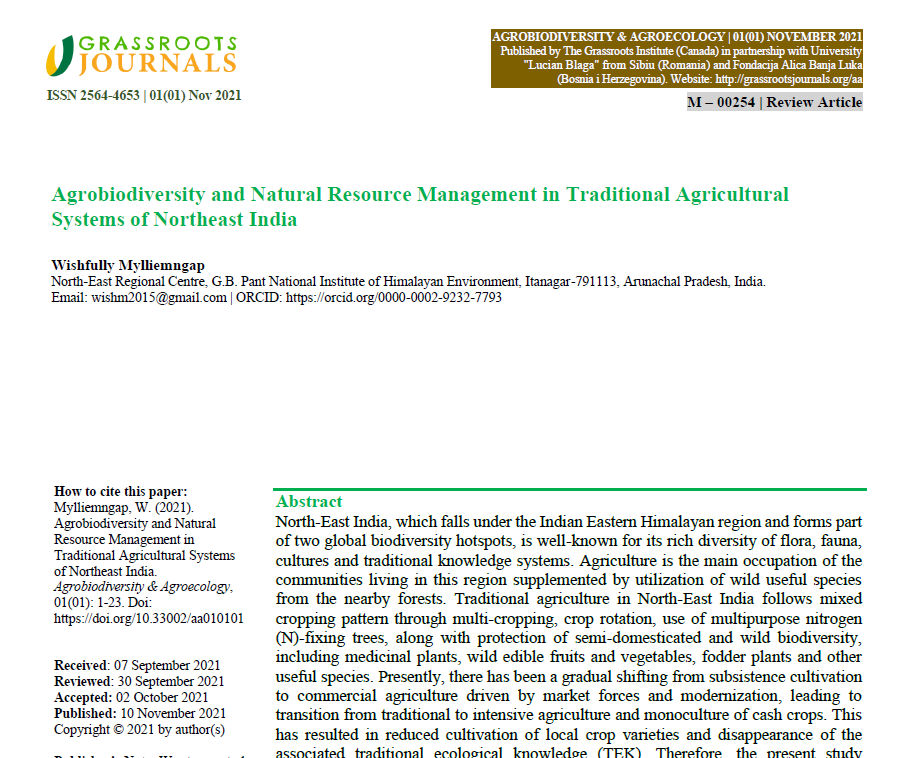
Agrobiodiversity and Natural Resource Management in Traditional Agricultural Systems of Northeast India
Publication Year: 2021
Author(s): Mylliemngap W
Abstract:
North-East India, which falls under the Indian Eastern Himalayan region and forms part of two global biodiversity hotspots, is well-known for its rich diversity of flora, fauna, cultures and traditional knowledge systems. Agriculture is the main occupation of the communities living in this region supplemented by utilization of wild useful species from the nearby forests. Traditional agriculture in North-East India follows mixed cropping pattern through multi-cropping, crop rotation, use of multipurpose nitrogen (N)-fixing trees, along with protection of semi-domesticated and wild biodiversity, including medicinal plants, wild edible fruits and vegetables, fodder plants and other useful species. Presently, there has been a gradual shifting from subsistence cultivation to commercial agriculture driven by market forces and modernization, leading to transition from traditional to intensive agriculture and monoculture of cash crops.
Source of Publication: Agrobiodiversity & Agroecology
Vol/Issue: 1(1), 1-23pp.
DOI No.: Doi: https://doi.org/10.33002/aa010101
ISSN: 2564-4653
Country: India
Publisher/Organisation: The Grassroots Institute Canada
URL:
https://grassrootsjournals.org/aa/aa-01-01-01-mylliemngap.pdf
Theme: Traditional/ Indigenous Knowledge | Subtheme: Agrobiodiversity



